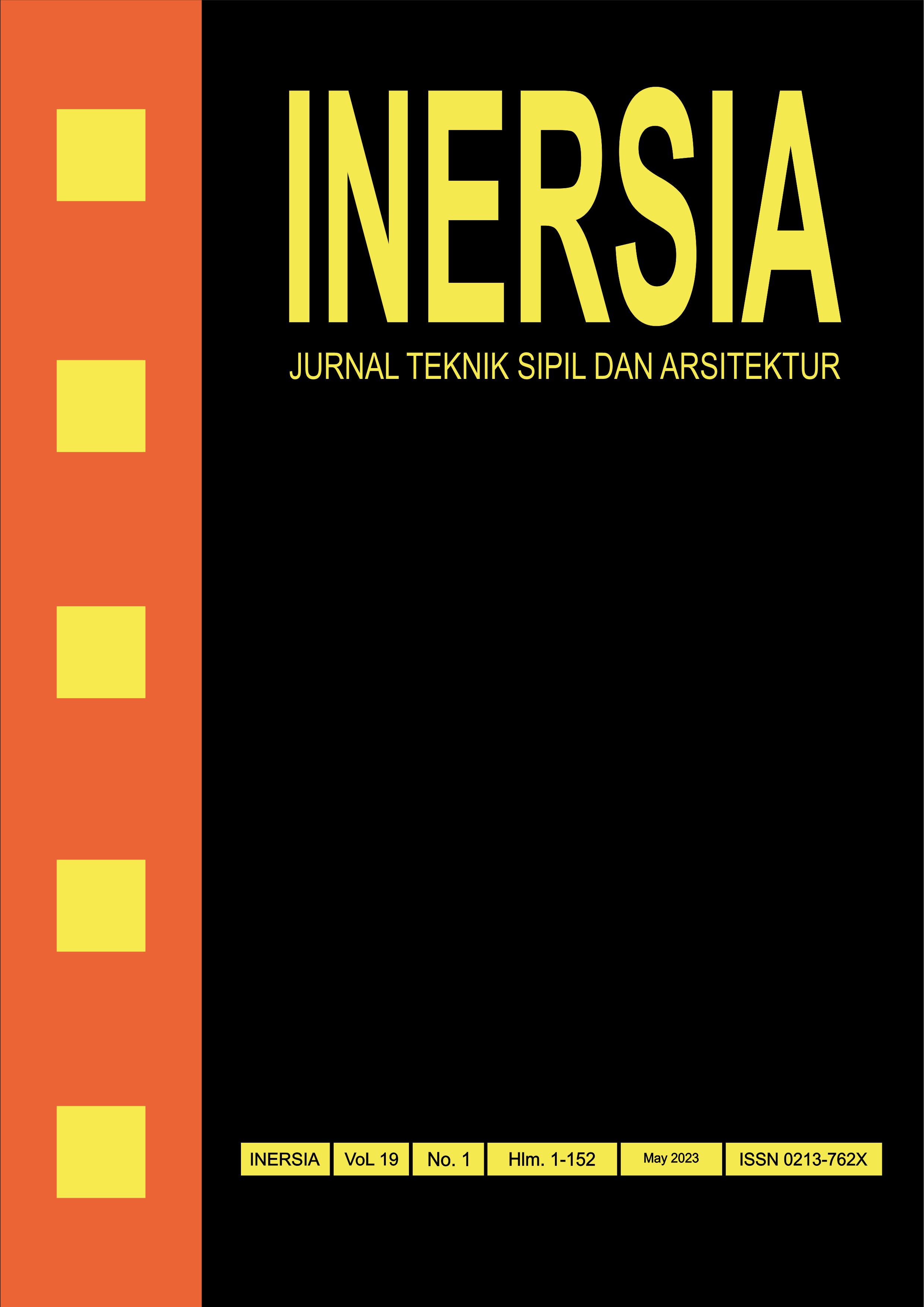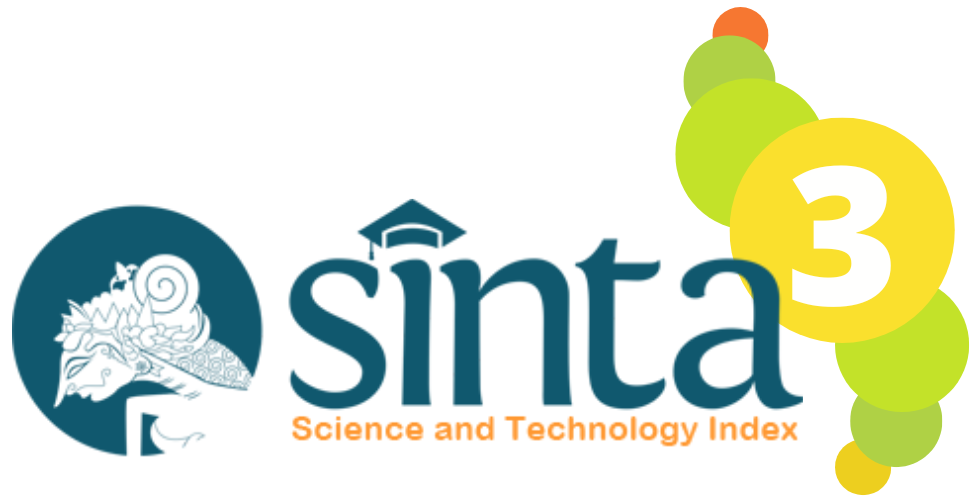Innovation in Railway Investment Financing Through The Land Value Capture Earmarks Scheme
DOI:
https://doi.org/10.21831/inersia.v19i1.58153Keywords:
LVC, NJOP, Land Tax, Hedonic, PSOAbstract
The government of Indonesia is currently working to improve infrastructure, with a particular focus on the railway sector, in order to make transportation more accessible and affordable for all citizens. Therefore, this study aims to determine the reliability of alternative financing for the Land Value Capture (LVC) scheme, especially through earmarks (land tax increase). This scheme is very interesting to examine due to its great implementation potential in Indonesia. In this study, the primary data were obtained from direct measurements in the field of information derived from accessibility factors. Meanwhile, the secondary data were in the form of land price data in the NJOP (Tax Object Sale Value), as well as site structure, and its environment. From this context, the land price forecasting model used the Hedonic method developed into a Log-Log equation and was analyzed by using multiple regression statistical techniques with iterations, to obtain the best model. The LVC calculation also used the calculation formula for Land and Building Tax (PBB), as stated in Governor of Jakarta Regulation No. 77 of 2014. Based on the results, the development stage of the land price forecasting model showed that the independent variables with the most significant contribution (α > 0.005) were dominated by accessibility-related factors. In the residential, office, and commercial areas, the maximum increase in land value ranged from IDR 696.8 thousand/m2-IDR 30.5 million/m2, IDR 1.25 million/m2-IDR 41.4 million/m2, and IDR 595.9 thousand/m2-IDR 24.4 million/m, respectively. These estimations were observed with an average increase in the earmarks of all stations at 39.84%. Regarding the initial year of the project operation, the LVC value also obtained the maximum coefficient of the tax difference scheme from 21 stations at IDR 471,941,540,397/year.
References
Adisantoso, Julio. Model Log-Linier Dan Regresi Logistik. By G16109011/STK, 2010.
Affuso, luisa, et al. Comparing Investments in New Transport Infrastructure: Roads versus Railways? Vol. 24 no. 3, Institute for Fiscal Studies, 2003, pp. 275–315.
Allen, Peter, et al. SPSS Statistics Version 22: A Practical Guide. 3rd Edition, Cengage Learning, 2014.
Annisari, Ussisa. "Critical Factors in Public Private Partnership Projects for Railway Projects in Indonesia – (Case Study: Comparison of Solicited and Unsolicited Proposals)." United International Journal for Research & Technology, no. Issue 08, UIJRT, 2021.
Asian Development Bank. "Innovative Infrastructure Financing through Value Capture in Indonesia | Asian Development Bank." Asian Development Bank, 24 May 2021, Http://Dx.Doi.Org/10.22617/SPR200093-2.
Bank, Asian Development. Innovative Infrastructure Financing through Value Capture in Indonesia. Asian Development Bank, 2021.
Bappenas. Rencana Pembangunan Jangka Menengah Nasional (RPJMN) 2020 - 2024. 1st ed, 2019.
Berawi, Mohammed Ali, et al. "Forecasting the Land Value around Commuter Rail Stations Using Hedonic Price Modeling." International Journal of Technology, no. 7, International Journal of Technology, Dec. 2018, p. 1329. Crossref, doi:10.14716/ijtech.v9i7.2589.
Blanco B, Andrés G., et al. The Potential of Land Value Capture for Financing Urban Projects: Methodological Considerations and Case Studies. Inter-American Development Bank , 2016.
Brown, Nick. Value Capture Framework & Toolkit; Final Report. Issue 1, Urban Growth Company, 2017.
Calthorpe, Peter. The Next American Metropolis. Princeton Architectural Press, 1993.
Cengiz, Elif Can, and Hí¼seyin Murat í‡elik. "Railway Financing Via Urban Development." Urban Transport XXIV, Istanbul Technical University, Turkey, 2019. WIT Transactions on The Built Environment, Vol 182, © 2019 WIT Press
Cervero, Robert, and Jin Murakami. "Rail and Property Development in Hong Kong: Experiences and Extensions." Urban Studies, no. 10, SAGE Publications, Aug. 2009, pp. 2019–43. Crossref,doi:10.1177/0042098009339431
Chi"Man Hui, Eddie, et al. "Land Value Capture Mechanisms in Hong Kong and Singapore." Journal of Property Investment & Finance, no. 1, Emerald, Feb. 2004, pp. 76–100. Crossref, doi:10.1108/14635780410525153.
Edgar, Tamado Efraim, et al. "Design of Bandung Raya Light Rapid Transit (LRT) Business Model Using Business Model Canvas Framework." International Conference on Rural Development and Enterpreneurship 2019 : Enhancing Small Busniness and Rural Development Toward Industrial Revolution 4.0, Vol. 5 No. 1, 2019, doi:ISBN: 978-623-7144-28-1.
Firdausy, Carunia Mulya. "Potential Financial Instruments toward Sustainable Urban Infrastructural Development in Indonesia." International Journal of Critical Infrastructures, no. 4, Inderscience Publishers, 2018, p. 295. Crossref, doi:10.1504/ijcis.2018.10016654.
Fujiyama, Taku. Urban Railway Business Management. Department of Civil, Environmental and Geomatic Engineering, 2019.
Ghozali, Imam. Aplikasi Analisis Multivariate Dengan Program IBM SPSS 21 Update PLS Regresi. Badan Penerbit Universitas Diponegoro, 2013.
Khuwaja, Zeba, et al. "Accuracy Measurement of Google Earth Using GPS and Manual Calculations." International Conference on Sustainable Development in Civil Engineering, MUET, Pakistan, 2017.
Lari, Adeel, et al. Value Capture for Transportation Finance: Center for Transportation Studies University of Minnesota, 2009.
McIntosh, James, et al. "Framework for Land Value Capture from Investments in Transit in Car-Dependent Cities." The Journal of Transport and Land Use, no. Vol. 10 No.1, the University of Minnesota Center for Transportation Studies, 2017, pp. 155–85.
Muhyiddin, and Hanan Nugroho. "A Year of Covid-19: A Long Road to Recovery and Acceleration of Indonesia's Development." Jurnal Perencanaan Pembangunan: The Indonesian Journal of Development Planning, no. 1, The Indonesian Journal of Development Planning, Apr. 2021, pp. 1–19. Crossref, doi:10.36574/jpp.v5i1.181.
Safaria, Fery, et al. Land Value Capture as Breakthrough of Financing Scheme in Urban Railway Development in Indonesia. 2022.
Salaj, Alenka T., et al. "Land Value Capture Strategies in PPP – What Can FM Learn from It?" Emerald Insight, June 2017, pp. 24–36, doi:10.1108/F-03-2017-0033.
Vol. 36
Sitharamaraju, K., et al. "Public-Private Partnership (PPP) in Indian Railways: Models, Framework, and Policies." IIM Ahmedabad, W. P. No. 2020-12-05, 2020.
Smolka, M. O. "Implementing Value Capture in Latin America: Policies and Tools for Urban Development." Lincoln Institute of Land Policy, Cambridge, 2007.
Suzuki, Hiroaki, et al. Financing Transit-Oriented Development with Land Values. World Bank Publications, 2015.
Syabri, Ibnu. "The Influence of Railway Station on Residential Property Values-Spatial Hedonic Approach The Case of Serpong's Railway Station." Jurnal Teoretis Dan Terapan Bidang Rekayasa Sipil, no. 3 Vol. 18, 2011.
Tang, David. "How MTR Builds and Connects Communities in Hong Kong." MTR Corporation Limited, 21 June 2018.
Tufail, Dwiana Novianti, and Puspita Dirgahayani. "Identifikasi Potensi Land Value Capture Di Kawasan Stasiun Gedebage Menggunakan Hedonic Pricing Model." CSID Journal of Sustainable City and Urban Development, no. 2 Vol. 1, 2018, pp. 13–21.
Walters, Lawrence C. "Land Value Capture in Policy and Practice." Journal of Property Tax Assessment & Administration, no. 2 Vol. 10, 2013, https://researchexchange.iaao.org/jptaa/vol10/iss2/1.
Widyahari, Ni Luh A. "Valuation on Land Value Capture of Transit Oriented Development to Support Public Infrastructure Development in Greater Jakarta - Indonesia." Presentation in AVA Congress - Singapore, 2017.
Downloads
Published
How to Cite
Issue
Section
License
Authors who publish with INERSIA journal agree to the following terms:
- Authors retain copyright and grant the INERSIA journal right of first publication with the work simultaneously licensed under Creative Commons Attribution License (CC BY 4.0) that allows others to share the work with an acknowledgment of the work's authorship and initial publication in this journal.
- Authors can enter into separate, additional contractual arrangements for the non-exclusive distribution of the published version of the work (e.g., post it to an institutional repository or edit it in a book), with an acknowledgment of its initial publication in this journal.
- Authors are permitted and encouraged to post their work online (e.g., in institutional repositories or on their website) before and during the submission process, as it can lead to productive exchanges, as well as earlier and greater citation of published work.

INERSIA by https://journal.uny.ac.id/index.php/inersia was distributed under a Creative Commons Attribution 4.0 International License











